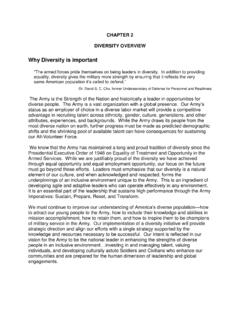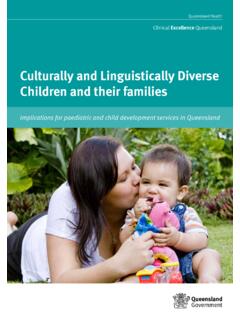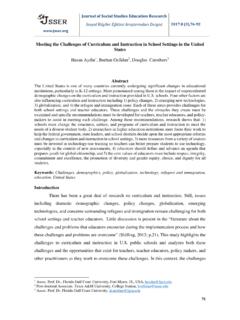Transcription of Growing Gardens Youth Grow Lesson Plan
1 Growing Gardens 1 Growing Gardens Youth Grow Garden Lesson Manual Growing Gardens 2 About Growing Gardens Growing Gardens gets at the root of hunger in Portland, Oregon. We organize hundreds of volunteers to build organic, raised bed vegetable Gardens in backyards, front yards, side yards and even on balconies. We support low income households for three years with seeds, plants, classes, mentors and more. Our Youth Grow after school Garden Clubs grow the next generation of veggie eaters and growers! Through Learn & Grow workshops and work parties, we teach gardeners all about Growing , preparing and preserving healthful food while respecting the health of the environment. We plant seeds for good food and healthy people by making sure low income people have the resources they need to grow organic vegetables at home.
2 Through this work, community members meet over the backyard garden, through volunteering, by attending classes, and through sharing extra produce. Mission and Values Growing Gardens promotes home-scale organic food gardening to improve nutrition, health and self-reliance while enhancing the quality of life and the environment for individuals and communities in Portland, Oregon. We believe: Access to healthful, culturally appropriate food is an inherent right. Individuals and communities are empowered when they have the knowledge and skills to provide food. All people deserve recognition and respect for their unique value. Joy and fun are essential elements in any activity we host, promote, or undertake. Trust, honesty, open-mindedness and accountability are core elements in all we do.
3 Quality of life is improved when we respect and honor our environment and when we promote the interconnection of all things. About Youth Grow Growing Gardens Youth Grow Program empowers low-income elementary school children with lifelong skills Growing food and eating healthfully in a way that protects the earth. Children develop knowledge of organic gardening techniques, nutrition and healthy behaviors in the living laboratory of the garden. Our unique three-year school partnerships build the capacity of a school community to lead and sustain garden-based educational programs at their sites. Youth Grow After-School Garden Club is designed to help reduce risk factors for low income students and create the foundation for self-reliance that lasts a lifetime.
4 Growing Gardens 3 Program Rationale According to the United States Department of Agriculture (USDA) Oregon citizens are at high risk to experience food insecurity (uncertainty about where the next meal is coming from). One out of every eight Oregonians experiences food insecurity at some time during the year. Children who are hungry or poorly nourished do less well in school, both academically and behaviorally. "Lower socioeconomic status in childhood has been linked repeatedly with lower educational and income levels in adulthood, which in turn predict health status. Children in poor families are about seven times as likely to be in poor or fair health as children in the highest-income families."1 A study in 2005 revealed 25% of Oregon s eighth and eleventh grade students are at risk for becoming overweight or obese, putting them at risk to develop chronic disease such as diabetes, hypertension and cancer.
5 Given these alarming trends, it is expected that for the first time ever, the next generation of Oregonians will have shorter life spans than their parents. At our Youth Grow Partner Schools, we offer eight-week Garden Clubs after-school, as well as Garden Summer Camps. Hands-on food gardening activities are a very effective way to influence students attitudes and preferences toward fruit and vegetable We target elementary aged-children because it is documented that eating habits and preferences are established early in life and studies show that if established before 6th grade, positive habits are more likely to persist into adulthood. Studies show that when children have a hand in Growing food, their understanding of food and relationship to their health increases.
6 Garden club is also a fun, interactive way for students to: Increase knowledge of organic gardening and safe use of hand tools Increase opportunities for physical activity Learn life skills such as teamwork, patience, and cooperation. School Garden Coordinator Certificate Training Successful long-lasting school garden programs involve more than just digging in the soil - from yearly maintenance tasks to communicating among garden users. 1 Unnatural Causes Backgrounder, California Newsreel, 2008 2 McAleese, et al. Garden Based Nutrition Education Affects Fruit and Vegetable Consumption in Sixth-Grade Adolescents. Journal of the American Dietetic Association, Volume 107, Issue 4, April 2007, pages 662-665 Growing Gardens 4 Growing Gardens offers a 35 hour School Garden Coordinator Certificate Training in order to help people facilitate the creation of long-lasting edible school garden programs based on broad-based community support.
7 During this course, local experts share best practices in: a) community engagement and partnership; b) garden program development and implementation; c) principles of Youth garden education that are linked to education standards; and d) school garden program evaluation. Peer-networking and field trips to learning garden sites expose students to diverse programs and communities. For more information about this course go to Growing Gardens 5 Contents 1. Introduction and Overview 2. Working with Students in the Garden Classroom Management Techniques Peaceful Conflict Resolution Addressing Disruptive Behaviors Making Garden Club Accessible for All Students The Youth Grow Garden Club Structure Food Safety and Handling Evaluation 3.
8 Lessons Lesson I: Introduction to the Garden Lesson II: Parts of the Plant Lesson III: Seeds and Seed Dispersal Lesson IV: Flowers and Pollinators Lesson V: Bugs and Insects Lesson VI: Soil and Compost Lesson VII: Wondrous Worms Lesson VIII: Celebration 4. Bibliography 5. Appendices Appendix I: Garden and Food Related Children s Books Appendix II: Garden Based Curriculum Resources Appendix III: Gardening Resources Growing Gardens 6 1. Introduction and Overview This manual contains a series of eight garden-focused lessons, developed by Growing Gardens Youth Grow Program. These lessons have been shaped and informed by the work of other garden educators and programs, and we have adapted many activities, lessons, and concepts to fit within the structure of our program.
9 Our eight lessons introduce students to a broad range of garden topics, teach students how to grow food using organic methods, and expose them to tasting different fruits and vegetables. The activities give students the opportunity to improve skills in scientific investigation, teamwork, and leadership, as well as writing, drawing, and reflection. The manual is intended to be used by garden educators, parents, and teachers. The eight lessons are flexible in terms of required resources, materials, and physical garden spaces. Within the lessons, we include activities for younger students (K-2nd grade) and older students (3rd -5th grade) to be used as part of after-school Garden Clubs/programs. We also provide instructions for supplemental activities, and as well as recommendations for additional resources, children s books, and other gardening materials.
10 School Gardens can play a vital role in educating the next generation about where food comes from, and the importance of eating fruits and veggies. They can provide students with hands-on experiences and skills that can improve their future health and food security. Gardens are living classrooms that can provide a place for students to reconnect to the world around them. They offer students a place to explore the diverse plants, soil microorganisms, bugs, and insects that live right outside the school doors. In a time when the health and wellness of children is of increasing concern, school Gardens can be a valuable tool in working to decrease childhood obesity rates, while improving mental, physical, and social health. Garden education helps the next generation understand and respect the importance of a healthy and sustainable food system.








